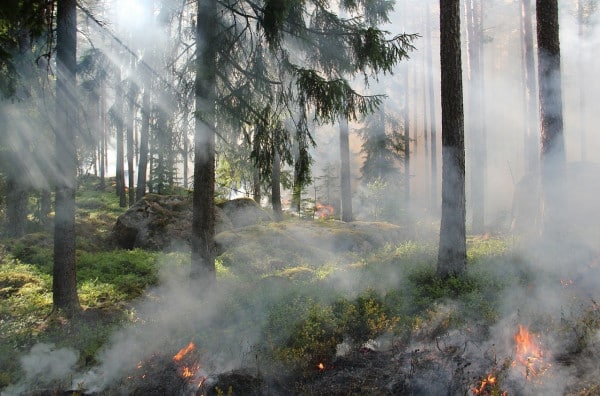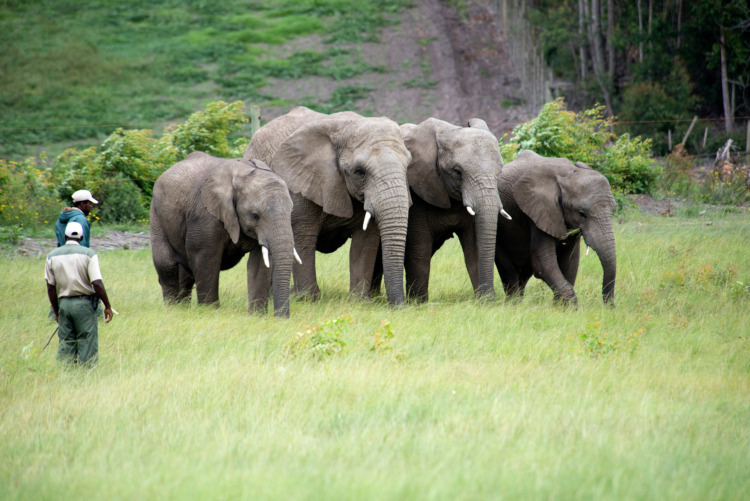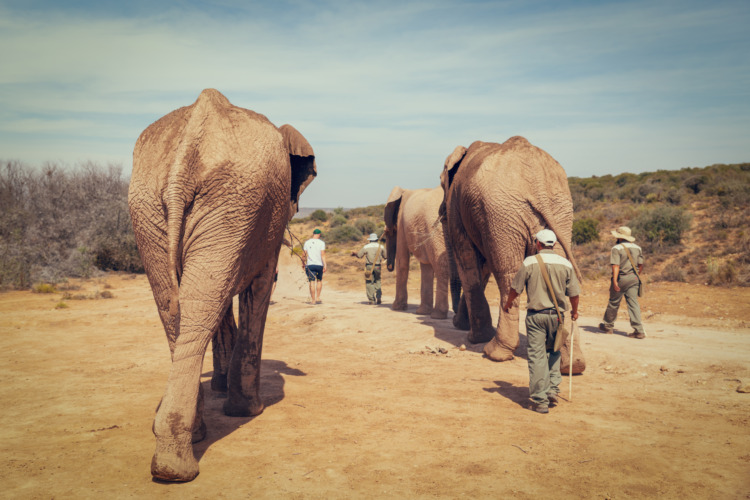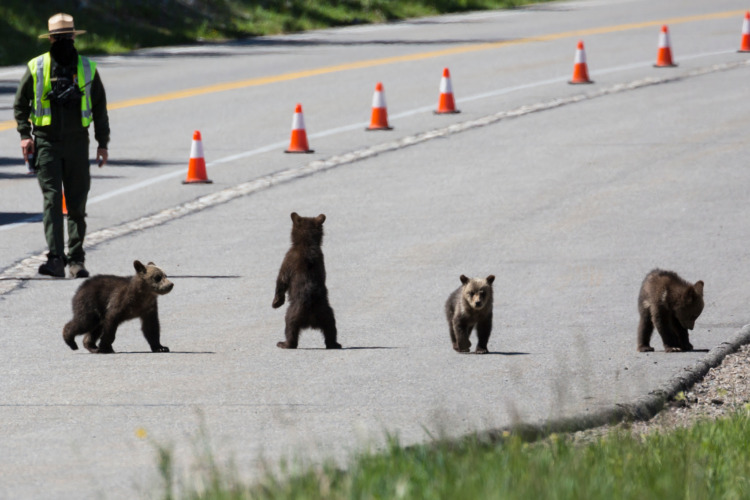Protecting our wildlife is paramount for our survival. That’s a fact! But, exactly what is the goal of wildlife conservation? Read on to get a clearer understanding of the issue.
Human beings depend entirely on nature for their survival. Nature is the source of essential resources like air, water, minerals, and wildlife. Unfortunately, continued human population growth, coupled with destructive human activities and climate change, has led to the destruction and depletion of some of these natural resources.

This in turn has resulted in the decline of essential biodiversity and even extinction. And although extinction is a normal natural process, the rate at which it is taking place today is worrying.
Fortunately, there are many conservation practices and policies that have been instituted to try and curb these extinction pressures.
This begs the question; what is the goal of wildlife conservation? Before we answer this question, it is important to first understand what wildlife conservation is all about.
What is Wildlife Conservation?

Wildlife conservation refers to the protection and preservation of animal and plant species and their habitats. This is critical because it helps to maintain healthy natural ecosystems with healthy populations of plants and animals.
There are so many things today that threaten wildlife. If they are not dealt with adequately, they may lead to the extinction of some animal and plant species. This would be a great loss not just for biodiversity, but for human beings specifically.

Wildlife conservation is done through a variety of approaches. They include legislation, the preservation and protection of public lands, and the establishment of organizations devoted to the welfare of wildlife.
For wildlife conservation to be successful, it is critical to understand how wildlife operates within their ecosystems, and the effect environmental and human factors have on them.
What is the Goal of Wildlife Conservation?

As mentioned earlier, many wildlife species are faced with the threat of extinction. If nothing is done about it, there will come a time when the world will be without the plants and animals that exist today.
The UN estimates that, as of 2019, there are over a million species that are facing the threat of extinction. The ecosystems containing these endangered species are also on a steady decline.
And so you may wonder; what is the goal of wildlife conservation? Shouldn’t it be to halt and reverse this gradual disappearance of wildlife and their habitats? You are right. Wildlife conservation will help to bring the different wildlife species to a healthier, more manageable, and survivable level.
And because habitat destruction is one of the greatest threats to wildlife, wildlife conservation is also focused on the restoration and preservation of the spaces that are supposed to be occupied by animals and plants.
Wildlife conservationists are now paying attention to the urgent need to address these challenges before things get out of hand.
What is a Hunter’s Role in Wildlife Conservation?

Strange as it seems, hunting can be beneficial to wildlife. If done in a controlled and strategic manner, it is a very effective wildlife management tool.
If wildlife populations, especially animals, are left to increase unchecked, it will create an unhealthy competition for resources to the detriment of some or all species. It is therefore important to keep a healthy balance.
Hunters play the crucial role of keeping animals populations at healthy proportions. Aerial surveys are usually done well in advance to establish the number of animals that are available to hunt.
Hunters also contribute to wildlife conservation through the provision of financing. Wildlife conservation is resource-intensive and so multiple sources of financing a required.
Multiple financial reports show that hunters spend money and time on wildlife conservation compared to any other group in society. A significant amount of this money comes from the sale of hunting licenses and the taxes on hunting equipment.
Which are Some of The Governing Bodies Involved in Wildlife Conservation?

Many nations in the world today appreciate the importance of wildlife conservation. As a result, they have come up with different governing bodies and agencies to help in the management of wildlife.
One of the most visible governing bodies in global wildlife conservation is the International Union for Conservation of Nature. It was formed in France in 1948 to play a leading role in the management and preservation of the natural world.
One of their most known projects is the IUCN Red List of Threatened Species, which provides an assessment of the conservation status of different species worldwide.
Through the information and data IUCN compiles, the organization can influence governments, business organizations, and other stakeholders to act responsibly towards wildlife.
Other world-governing bodies that play a huge role in wildlife conservation include the UN Food & Agricultural Organization, UNESCO, and the World Wildlife Fund.
See Related: Easy Plant Propagation Techniques to Start Today
What is the North American Model of Wildlife Conservation?

The North American Model of Wildlife Conservation is based on a set of principles decreed by the Supreme Court of the United States. This decree stipulates that wildlife is the property of the people and thus ought to be managed as so by government agencies on behalf of the people.
The Model is anchored on the following seven principles;
- Wildlife should be a public resource and is managed by the government in trust.
- No trading in meat and parts of game and non-game species.
- Allocation of wildlife is according to democratic law.
- All wildlife policies should be science-based.
- Access to wildlife should be allocated democratically.
- The killing of wildlife should only be done for a legitimate purpose.
- Wildlife species are also an international resource to be shared and managed across national borders.
This model has helped to undo the damage done to wildlife through the unregulated harvesting of wildlife species.
See related: Dyer Island Conservation Trust
What is the Result of Effective Wildlife Conservation?

Wildlife conservation is only effective if nature is preserved and biodiversity is kept at a healthy balance. Effective wildlife conservation is also about the long-term sustainability of wildlife. This way, even future generations will have the opportunity to enjoy and benefit from nature as other generations have done.
In addition to protecting biodiversity, wildlife conservation also has other beneficial outcomes. They include;
- Food security – wildlife conservation helps in creating a thriving, secure, and robust food system.
- Public health – healthy and balanced biodiversity is a rich source of medicinal products and also helps to create a safe disease-free environment.
- Climate change – wildlife conservation helps in regulating the climate.
- Economic benefits – conservation activities offer new opportunities in the preservation-based economy.
So if we do not take wildlife conservation seriously, we are risking not just vital ecosystems and biodiversity, but also our very existence as human beings.
Wildlife Conservation Organizations

In case you are asking; what is the goal of wildlife conservation? There are many non-governmental organizations whose activities will help you understand what wildlife conservation entails.
Some of these organizations focus on all wildlife species while others just focus on a particular species like birds or gorillas.
Some of the most visible and most active wildlife conservation organizations include;
- World Wide Fund for Nature (WWF) – WWF is the largest wildlife conservation organization in the world. The NGO operates in over 90 countries.
- The Nature Conservancy – this is a charitable organization based in the US whose work is to protect and preserve the plants and animals, and the natural resources they need to survive.
- Conservation International – It helps to support conservation efforts in the US and around the world.
Other notable organizations include;
- Wildlife Conservation Society
- National Wildlife Federation (NWF)
- WildEarth Guardians
- African Wildlife Defence Force
These organizations provide an avenue for people to be part of conservation efforts by contributing their money. People volunteer their time and skills even those without wildlife conservation degrees.
What is Being Done to Protect Endangered Species?

Many interventions have been put in place to protect and preserve endangered species. Of all these, legislation has proved to be a very effective wildlife conservation tool especially in the protection of endangered species.
In the US, for instance, there are many landmark pieces of legislation that have been signed into law to help safeguard against the loss and extinction of plants and animal species.
The Endangered Species Act is a good example. Instituted in 1973, most of the threatened and endangered species protected under its have experienced a dramatic turnaround and now exist in abundance.
Proper legislation underpins all other conservation efforts helping to make interventions easy and effective. It has helped to hold organizations and individuals accountable.
Legislation has also led to an increase in funding for federal and state wildlife conservation efforts that benefit endangered species.
Are there other Effective Wildlife Conservation Interventions?
1. Creation of National parks

National parks and wildlife reserves are areas that have been set aside for wildlife to operate freely without interference from human beings. They are very rich in terms of biodiversity and natural landscape.
Plants and animals are not only protected but also allowed to thrive in their natural environment.
There are more than 400 national parks and game reserves in the U.S. alone. They are home to millions of species of both animals and plants.
National parks provide economic benefits because of the hundreds of thousands of people who visit every year. Some of these economic benefits have been channeled back to boost wildlife conservation efforts.
See related: Coniferous Trees Response to Climate Change and Conservation
2. Wildlife Mitigation Plans

Lately, there has been a lot of clamor for proactive wildlife conservation efforts. Instead of just focusing on protecting endangered species, plans should be put in place to avert their decline in the first place.
Many organizations are championing these broad-based conservation interventions. The National Wildlife Federation, for example, is pushing for the signing into law of the Recovering America’s Wildlife Act to help at-risk wildlife before it gets to the point where they require the more costly and restrictive intervention measures.
These mitigation plans also involve making funding available and more accessible for states, organizations, and communities to be able to adopt proactive, on-the-ground measures to restore, preserve, and protect wildlife species and their habitats.
3. Reduction of Pollution

For those wondering; what is the goal of wildlife conservation? The creation of a safe environment for animals and plants is definitely one of them.
There are so many pollutants today that have a huge negative on the health of wildlife and their habitats.
Human beings are largely to blame for this. There are so many waste materials arising from our daily activities that find their way into the air and waterways and become pollutants. They include trash, sewage, industrial and agricultural chemicals, toxic emissions, and many others.
Adopting simple practices like reduce, reuse, and recycle will go a long way in reducing pollution and creating a more habitable natural environment for wildlife.
